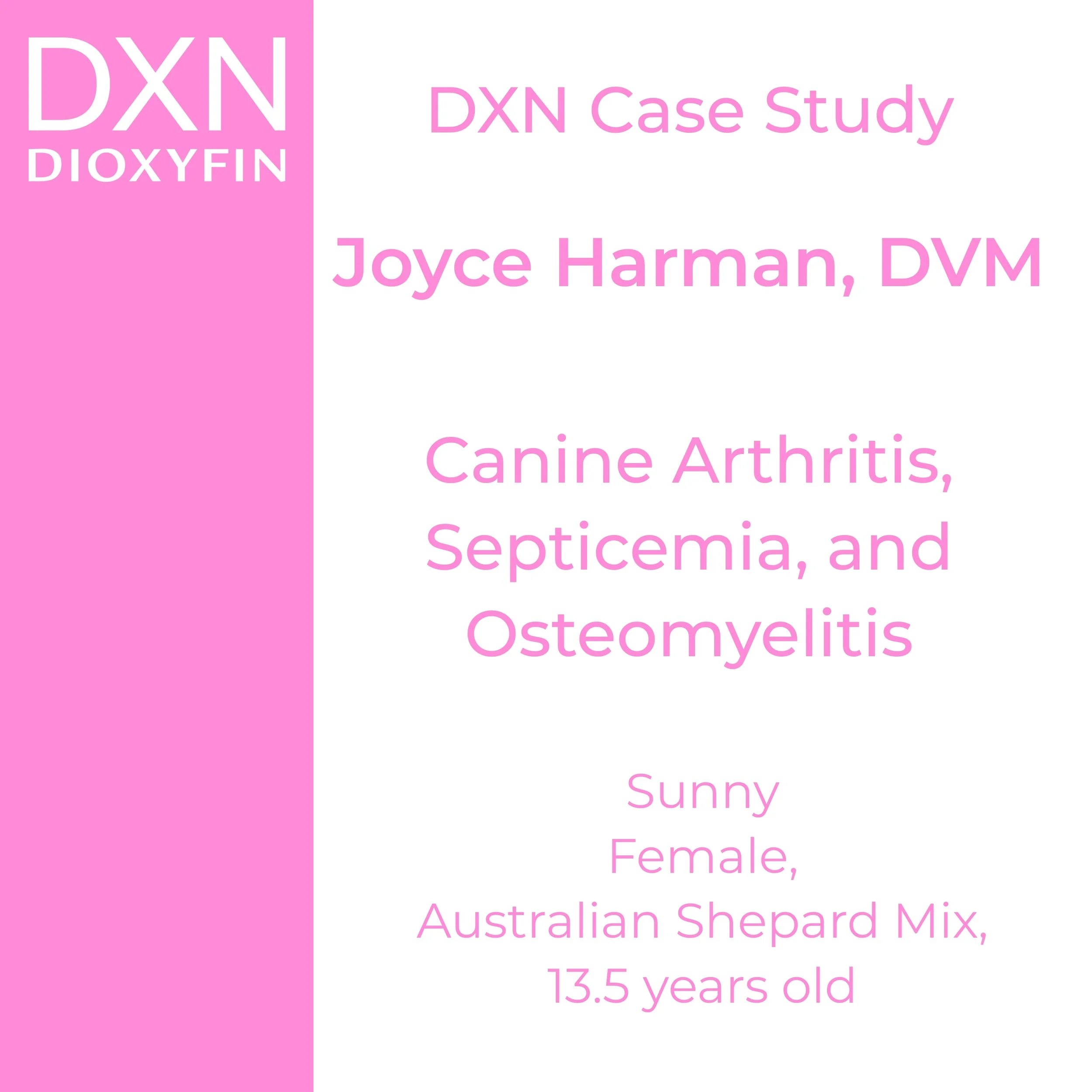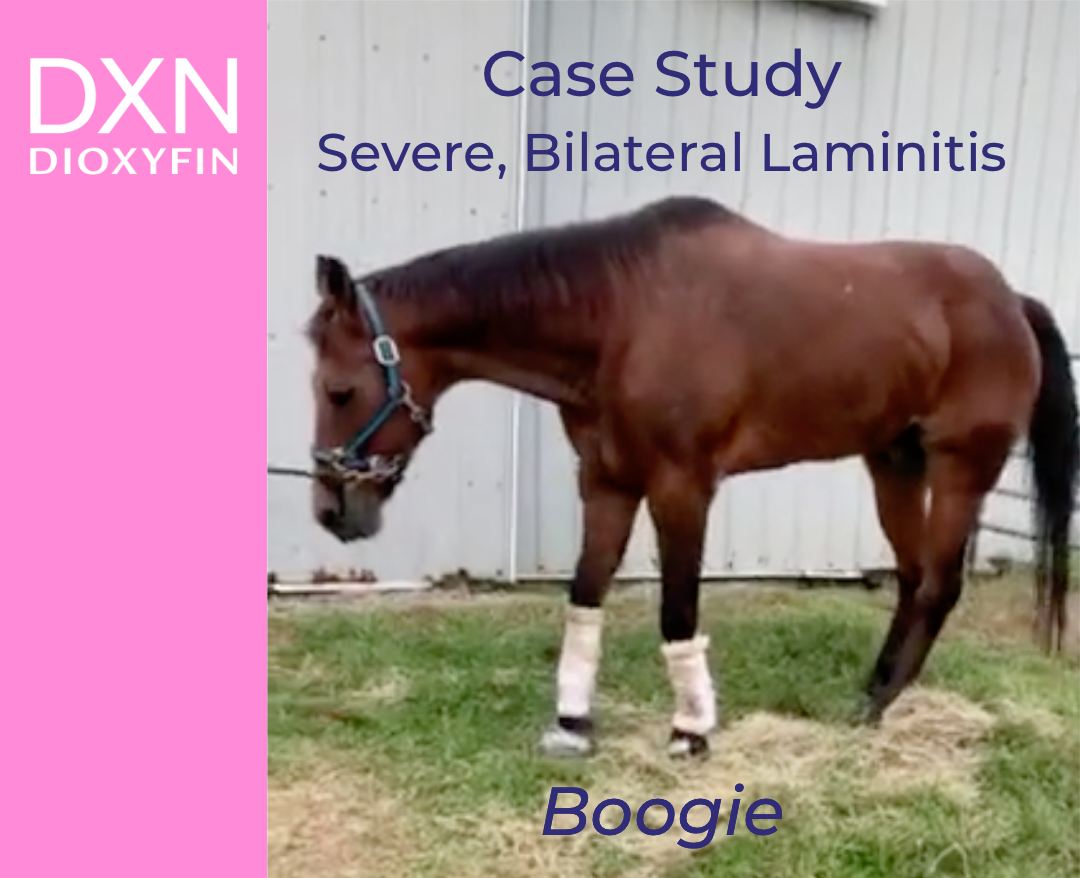Dashy’s cellulitis and her open wounds responded immediately to the transdermal pharmaceutical carbon dioxide treatments. And, within 24 hours she was putting weight on the sore leg and ambulating with comfort. Her quick improvement was observed by our team and by our client. Not only was the clinical response impressive, the transdermal carbon dioxide treatment made her much more comfortable than any other modality we previously administered.
Read MoreTransdermal carbon dioxide was used as primary therapy for wound healing and treatment. After one week of traditional therapy, that included Class 4 Laser Therapy, lavage, bandage changes, antibiotics and pain medications, quicker healing of wounds occurred.
Read MoreEli was lame on right front for five months. Initially sound after nerve block to the foot, sensitive to hoof testers at the time so suspected an abscess. That seemed to get a little better and then got worse again, but not positive to hoof testers anymore and nothing seen on x-rays. Restricted in medial pastern/ coffin and pastern. Collateral ligament injury to the distal limb was the assumed diagnosis. Stall rest for 2 months did not improve the lameness. Beginning on November 2nd, pharmaceutical carbon dioxide was used as a primary treatment and the lameness was improving within 2 weeks. The lameness was resolved within 30 days after rehab, rest, and transdermal carbon dioxide.
Read MoreTransdermal carbon dioxide was used as a primary therapy for generalized arthritis and specific left hip and left elbow arthritis post septicemia and osteomyelitis. She improved after each treatment and has gained mobility and strength. The improvements in mobility and flexibility are noticed by the day after each treatment.
Read MoreBoogie’s comfort and mobility improved. We saw increased vascularity and sole depth. The transdermal carbon dioxide therapy provided a solution we could offer the client on site that complimented the necessary mechanics.
Read More“The pharmaceutical carbon dioxide treatments had a direct effect on the shortened healing time of the tendon sheath wound and reduction of infection.”
Read MoreLarge cyst on the dorsal aspect of the tail with recurrent rupturing and oozing. Owners wanted to be able to have the cyst removed without tail amputation and without the cost or post-operative restrictions needed for skin grafting. Transdermal Respidox carbon dioxide significantly shortened the healing time of the tail.
Read MoreHealthy mare prior to injury, used as a jumper in Europe, recently imported to the USA. Immediately after injury she was partially weight-bearing on the right hind. Radiographs revealed a small traumatic bony fragment or “flake” originating from the calcaneus. No tendon sheath or joint involvement was found.
Read MoreThe speed of healing using transdermal carbon dioxide was much faster than previous treatment protocols. This allowed Pumpkin to remain in work and in competition. This therapy was easy, non-invasive to perform and could be done easily on any horse that can be confined to a stall or grooming area. The results were immediate. The discomfort and inflammation were resolved within two days of the first therapy. Rather than using shampoo, cream, a wrapping protocol and drugs, the transdermal CO2 therapy was simple and the owner did not have to wrap the leg. The time and cost savings is significant and the therapy is a fantastic first option when treating scratches.
Read MoreThere is significant evidence based on the history of Sadie’s trauma, her treatments and the progression of the lameness, swelling and lesion that the transdermal carbon dioxide treatments had a direct and positive effect on improving degree of lameness and a likely positive effect by accelerating lesion healing and reducing inflammation. Transdermal carbon dioxide treatments are likely to be an appropriate adjunctive therapy for treating soft tissue inflammation and distal suspensory ligament injuries to accelerate healing, reduced inflammation, with a result of improved overall lameness scores.
Read MoreTransdermal carbon dioxide was used as a primary and adjunctive treatment for a chronic recurrent cellulitis of the left hind limb. Cassie began to develop bouts of cellulitis about 2 years ago in the left hind leg. The first bout occurred soon after receiving vaccines. Multiple bouts occurred, usually after vaccines, medications, osteopathic work, or a stressful event. They were treated using antibiotics (Baytril), steroids and diuretics. The bouts began to occur more regularly, about every two months and were costing at least $1000 for treatment each time. Transdermal carbon dioxide made a significant difference and there have been no further occurrences of cellulitis. The recovery from the cellulitis was dramatic and the horse is performing better and without recurrence of injury. Hoof wall integrity and growth improved. The owner is appreciating a financial benefit as well.
Read MoreTransdermal pharmaceutical carbon dioxide was used as an adjunctive therapy in a case of severe endocrinopathic laminitis in a 22 yr old Warmblood gelding in an attempt to increase the speed of sole depth thereby improving recovery time. Both front feet remained unstable with increasing palmar angles for several months before this therapy was introduced. Both the combination of derotation shoeing and use of the transdermal therapy likely played a role speeding up the recovery of this horse.
Read MoreTransdermal pharmaceutical carbon dioxide was used as an adjunct therapy for a very deep wound on the right rear pastern. Monkey had a severe sub-solar abscess that erupted above the coronary band on the caudo-lateral aspect of the pastern. It was very deep, necrotic and exposed the lateral collateral cartilage. Pharmaceutical carbon dioxide significantly shortened the healing time.
Read More












